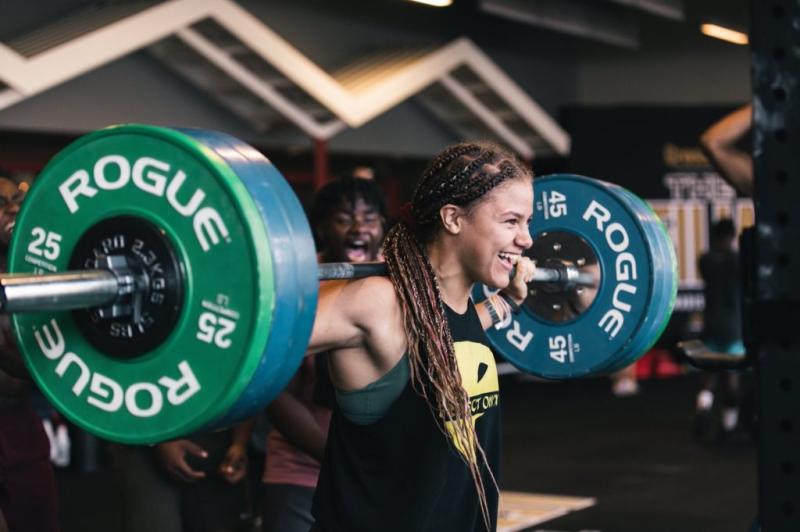CrossFit and Functional Training are well-known fitness programs, but they differ significantly. CrossFit is a high-intensity fitness regimen incorporating cardio, weightlifting, and gymnastics. It is differentiated by its “Workout of the Day” (WOD) format, which varies daily and frequently entails intricate, high-intensity movements executed at high speeds. It promotes competition and progress monitoring, and the workouts are frequently group-based.
Functional training, on the other hand, emphasizes preparing the body for everyday activities. The exercises are designed to improve equilibrium, coordination, strength, and stamina by emphasizing movements that imitate real-world actions. The exercises are generally less intense than those of CrossFit, and the emphasis is placed less on competition and more on overall wellness and injury prevention. CrossFit is more intense and competition-oriented, often involving complex movements. In contrast, Functional Training is more about improving overall functional fitness, focusing on real-world activities, and may be better suited for individuals who are less interested in competition and more interested in general wellness and injury prevention.
What is CrossFit?
Greg Glassman came up with the CrossFit exercise program in 2000. It’s a high-intensity, constantly changing, functional movement exercise program that has become famous because of how complex the workouts are and how much they bring people together. CrossFit’s primary goal is to improve a person’s fitness in all ten areas: cardiorespiratory endurance, stamina, strength, flexibility, power, speed, coordination, agility, balance, and accuracy. This is done with a routine of exercises like weightlifting, body-weight exercises, and cardio.
CrossFit workouts, called WODs (Workout of the Day), often include parts of Olympic weightlifting, gymnastics, and high-intensity interval training (HIIT). Each WOD is different every day, and most of the time, it is done in a group with the help of a trained CrossFit coach. Workouts are timed, which makes people feel like they are competing with each other. The focus on data is one thing that makes CrossFit stand out. Practitioners are told to keep track of their times, weights, and reps to see how they’re improving over time. CrossFit is also based on a strong sense of community. Local affiliates create an environment that feels like a team, which many people find inspiring and essential to their exercise journey.
What is Functional Training?
Functional training is an exercise that prepares your body for things you do in real life, not just for a sport. It resembles daily movements and works for many muscle groups, focusing on core stability. The goal is to make the whole body more robust, stable, and flexible. This can help improve balance and agility and lower the risk of getting hurt daily.
Functional training usually involves activities that use your body weight or equipment, like kettlebells, resistance bands, stability balls, and free weights. It includes bending down, reaching out, pulling, and lifting. People of all fitness levels can do the workouts because they can be changed to fit their wants and abilities.
Functional training differs from traditional strength training, focusing on one muscle group at a time. Instead, it uses many muscles and joints to make complex movements. This method makes moves more efficient and easier to do everyday things. Functional training is a way to train the body to handle real-life physical stresses safely and effectively. It’s not just about making a body that looks good but also works well.
Difference Between CrossFit and Functional Training
CrossFit and Functional Training share a common goal—improving physical health and strength—but they do it differently. CrossFit is a high-intensity fitness program incorporating cardiovascular exercise, weightlifting, and gymnastics into a constantly changing “Workout of the Day” (WOD), typically carried out in a timed and competitive setting. Functional training, on the other hand, is designed to enhance your balance, coordination, strength, and endurance by using exercises that mimic real-world activities. It is less strenuous than competitive sports because its primary goals are health and injury prevention. CrossFit, on the one hand, is more of a competitive and strenuous exercise regime, whereas Functional Training focuses on all-around fitness and practicality. We’ve compared CrossFit to functional training and listed the main distinctions below.
Objective
CrossFit aims to improve fitness levels across a wide range of activities. Participants are challenged to increase their muscular strength, speed, stamina, and agility. Functional training aims to enhance one’s strength, balance, and coordination so that one may do daily tasks with greater ease and safety.
Intensity
Workouts in CrossFit are typically very strenuous. Although functional training might be difficult, it often uses less strenuous activities.
Structure
CrossFit is famous for its daily “Workout of the Day” (WOD), an organized workout with a specific focus. In contrast, functional training emphasizes various functional movements rather than a rigid framework.
Competition
CrossFit promotes healthy competition by challenging athletes to better their times or those of their peers. Instead of focusing on competition, Functional Training emphasizes improvement.
Movement Complexity
Complex Olympic-style weightlifting and gymnastics-inspired motions are commonplace in CrossFit. Exercises in functional training are simplified versions of actions people perform.
Risk of Injury
CrossFit has a greater risk of injury than other forms of exercise because of the high intensity and intricacy of the movements involved. Injuries are less likely to occur during functional training since the focus is on more familiar, low-risk motions.
Community Aspect
CrossFit is known for its emphasis on group work and camaraderie. While engaging in Functional Training in a group situation is possible, this is typically not the case.
Equipment
There is a need for specialized tools for CrossFit workouts, such as barbells, kettlebells, and gymnastic rings. Simple tools like resistance bands, stability balls, and your body weight are all you need to get started with functional training, though more advanced tools are always welcome.






